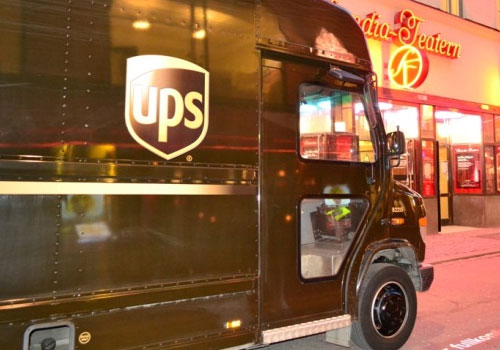
Selecting the Right Courier
Gregory Hoy, managing director of London-based sameday and express delivery company Excel Group Services Limited suggests that businesses should be more demanding of their courier company in today’s sameday market Over the last 12 months the UK’s highly competitive Sameday courier industry has fundamentally changed. Leading suppliers have adopted new business models. Multinational transport conglomerates and private equity firms have loaned millions of pounds to prop up ailing cash-flows or fund major mergers. And for a number of companies the introduction of new diversified services are now more important and take up more management time than Sameday delivery.
Given the fact that all this is taking place during the most turbulent economic conditions the country has seen for a decade, it is understandable that buyers are starting to take a much closer look at their service partners in this sector.
What is clear is that both buyers and contract managers need to ensure that the information they are receiving remains relevant and meaningful.
“How big a fish am I?”
Courier tenders always ask how many vehicles a courier has. This is a perfectly logical question to ask, and on the face of it would appear to provide a creditable means of comparing different suppliers’ abilities. However, without acquiring additional information, ‘fleet size’ is actually a very unreliable indicator of a supplier’s ability to provide customers with a consistently reliable service.
A business won’t receive a constantly reliable service because a courier company has the largest fleet, but because there is sufficient additional capacity within the fleet to meet the service requirements. Size does not equal service, in fact an exceptionally large fleet may prompt searching questions for a customer in terms of where their business ranks in relation to the supplier’s other clients – in other words how big a fish they are going to be.

Excel Group Services Limited managing director Gregory Hoy
Obtaining this information is not that straightforward. The question that will show a customer where they actually rank is quite specific, and it’s not: “Please list your top five clients and the amount they spend with you”, which is usually the question that is asked. A better question would be: “Please list your top five clients, including any Facility Management companies contracts that you service” or “What percentage of your turnover is provided by Facility Management companies”.
If a substantial part of the supplier’s turnover is based on work they do on behalf of FM companies (and I suggest anything over 25% should be considered substantial), a customer can be sure of two things. Firstly, they are going to be a much smaller fish in a much bigger pond than they could ever have imagined, as these contracts will require massive logistical support and command the highest service level the can provide.
Secondly, the supplier will have agreed to provide substantial rebates in order to secure this work. This point is particularly significant, as it means between picking up and delivering consignment for a particular customer, the courier will be instructed to pick up and drop off as many consignments as possible for other clients. This way of working is a financial necessity for these companies, because a significant number of their consignments have low profit margins, every courier needs to carry as many consignments as possible.
“All couriers are the same, so if I choose the biggest and cheapest, that’s got to work, right?”
There are many services where negotiating the lowest price will make a negligible difference to the quality received. Sameday couriers are not one of these.
When a customer considers the incredible amount of information they send every day via email and the simplicity and low cost of such a delivery method, it is clear that when a courier is needed to make a physical delivery, the value to the customer’s business of delivering an item is likely to far outweigh the cost of delivering it. If the consignments being sent are consistently late, lost, delivered to the wrong address or damaged, the impact on customers’ business will be significant. Sometimes it will be very significant.
“If you pay peanuts you get monkeys?”
In my experience, a buyer rarely asks their suppliers how much they pay their couriers, but it is an important question and the answer will help in the customer’s decision making process.
One of the main reasons a courier supplier may not be able to offer a consistently reliable service is because their fleet consists of a large number of inexperienced couriers who they will be paying just above or below minimum wage. Inexperienced couriers can’t find address, take longer to deliver their consignments, forget to collect PODs, don’t double check their pickup notes, don’t let reception know when they have arrived and so on.
In short you really don’t want these couriers carrying your consignments, but they will be if your supplier is paying low rates to their staff.
“A quick ‘pick up’ doesn’t mean a quick delivery”
A Courier company may try to sell their services based on how long it will take them to pick up a consignment. A guaranteed pick up within 20 minutes sounds great. However, due to the way courier companies optimise their fleets, a fast pick up time isn’t the same as a quick delivery time.
A ‘delivered within’ time is a far more effective way of measuring a supplier’s effectiveness. It is calculated from the time a customer made the booking to the time the consignment is delivered.
Now, it is perfectly understandable that a buyer would want consignments picked up quickly and delivered within agreed timeframes. However there is an operational dynamic at work here which, broadly speaking, means that you can have consignments picked up very quickly and receive inconsistent delivery targets, or consignments may hang around in the post room or at reception for a bit longer than you would like, but your deadlines will be consistently met.
Hidden charges: Buyer beware
Much has been written and broadcast about pricing ambiguity over the last year in the budget airline industry, and the same thing is happening in the courier industry.
It starts with buyers becoming transfixed by the single page low cost tariff presented by some courier companies. What these tariffs don’t show is the truly bewildering ranges of surcharges that are lurking under the surface and can scupper any chance of reducing costs.
To find out just how much this ambiguity stretches, customers should ask their suppliers whether surcharges are being applied for telephone bookings, for motorcycle couriers arriving with a top-box or large top-box, for changing an address once the job has been booked or the courier despatched, for a waiting time, for loading and unloading, for oversize items, for fuel and for administration purposes.
A courier company should also be asked how these surcharges are calculated, if any other surcharges have been applied, and for an itemised list of surcharges to be included within future invoices.
If you buy a service based on the low prices on a single page tariff you should really not be surprised when the hidden surcharges wipe away any hope you had of reducing your costs.
Here’s a 100% guaranteed way of reducing your waiting-time charges
Almost all major courier companies require their drivers to enter the amount of time they spend waiting into their handheld computers, with the client signature being the verification that the amount of waiting time entered is accurate.
It would be wrong of me to say some unscrupulous drivers may add on a couple of minutes’ waiting time to boost their earnings, but I can say with confidence that if this was happening it would be very unlikely you would be able to tell.
This is significant because it is very likely that of all the surcharges you may be paying, waiting time is the largest.
With the best will in the world, you have no way of knowing that the person signing for the consignment has really scrutinized the additional charge or, in the case of consignments picked and delivered to your office from another location, is even aware that their signature was authorizing a waiting time surcharge.
To keep waiting time to a minimum, a customer should ask for video replays of randomly-selected jobs, to see everything the driver did, including what time he arrived, how long he waited and what time he left and check the right waiting time has been recorded. Doing this on a regular basis can help waiting-time charges start to come down.
Cracking the Service Level Agreement enigma
Sometimes clients will look to apply financial penalties against a supplier’s failure to meet their Service Level Agreement.
However as there are no agreed metrics between courier companies for measuring Service Levels, one supplier’s proposed 98% service level cannot be considered more or less beneficial to a customer than a 95% service level offered by a competitor.
It would be irresponsible to say courier companies sometimes favorably adjust their SLA figures before presenting them to clients, yet if this were to happen it is very unlikely that a customer would know. It is simply not possible or practical to check the time of every delivery. Ultimately customers are reliant on the information provided by suppliers as the primary means of judging their performance.
To keep this critical element of the contract as honest and transparent as possible, asking for direct access to information from a courier’s despatch system is important, particularly relating to consignment pick-up and delivery times. With a couple of formulas from Excel, customers are able to establish the service level themselves and also be sure that the SLA being proposed is an authentic representation of the service received.
Given the complexity of selecting the right courier supplier, a customer should not be surprised if the supplier with the largest fleet who is offering the lowest prices and the most attractive Service Level Agreement is not the best service partner for their company.













